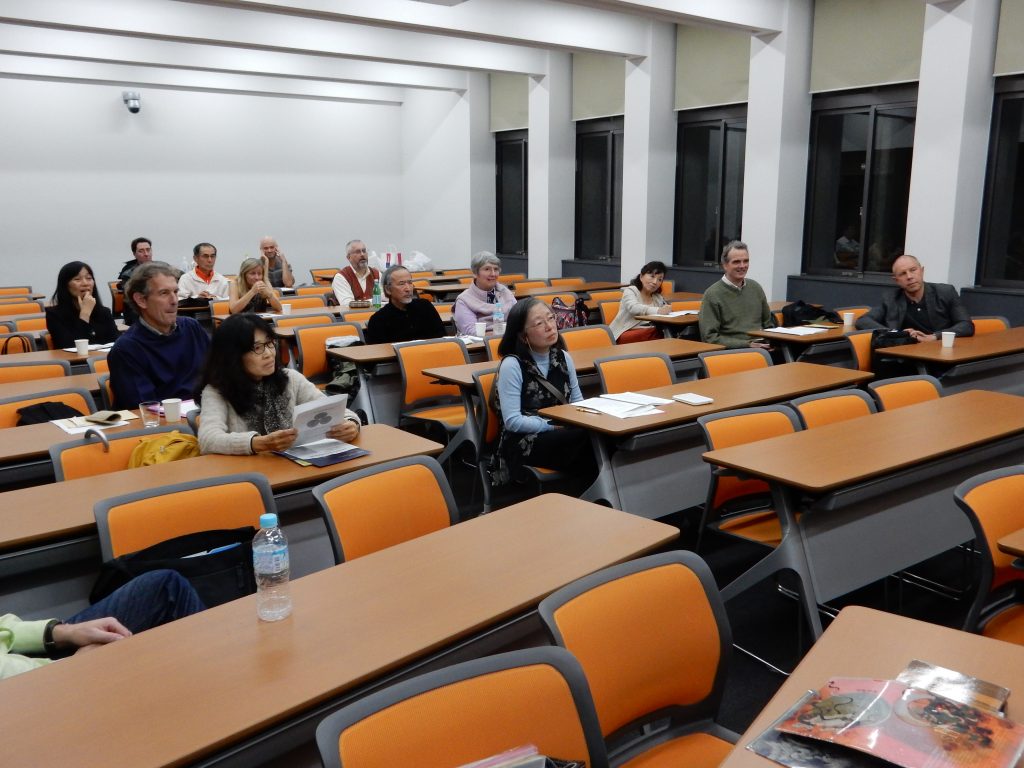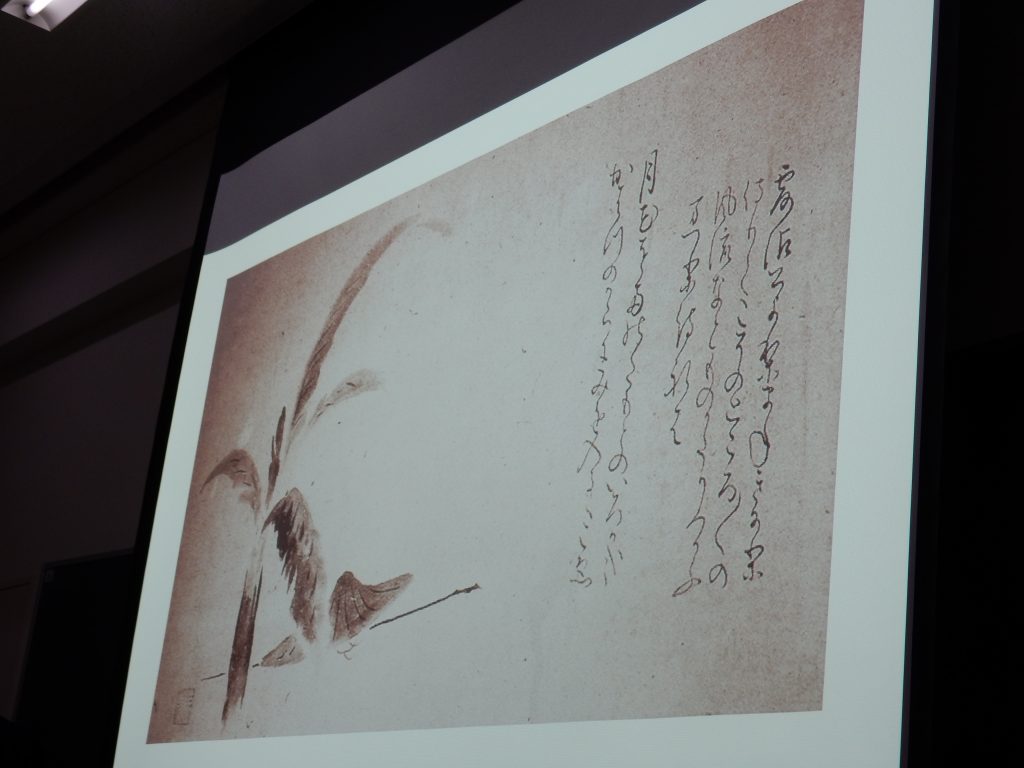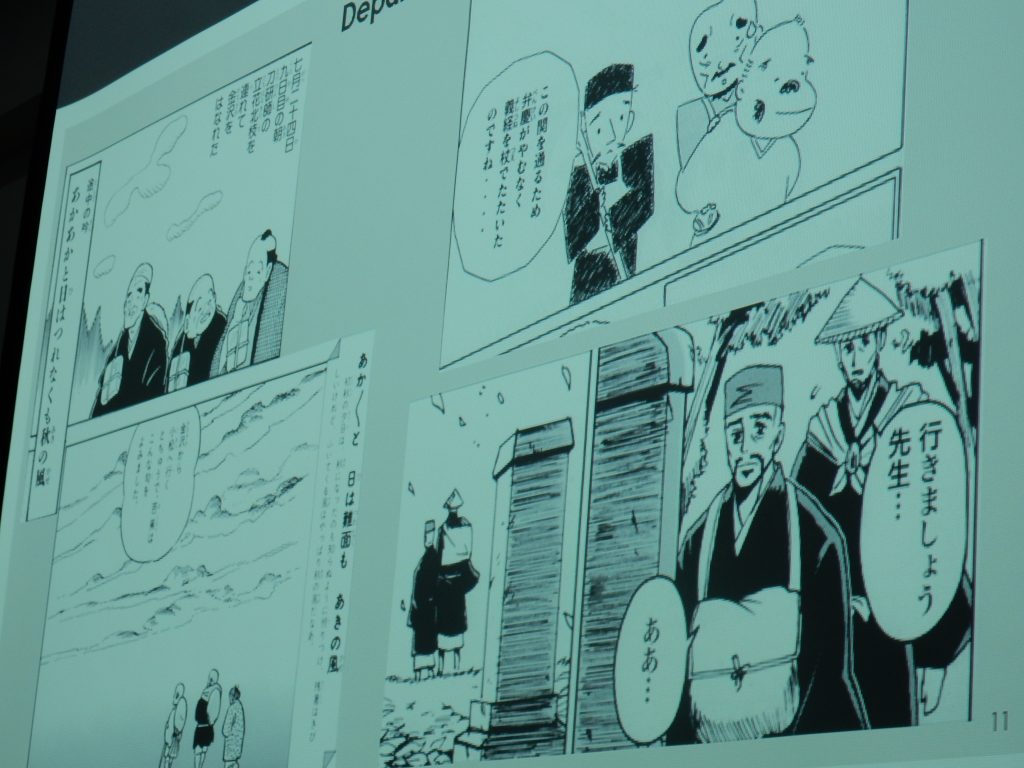
WiK’s Basho Colloquium, held on Oct 28 at Ryukoku University, proved a highly entertaining affair, both in terms of the presentations and of the socialising afterwards. There were three high-quality talks, each from a very different perspective – one of them rooted in traditional author analysis, one a very modern reading of fictionality, and one highly personal from a man with a mission. The discussion between them at the end sparked into life and could have gone on for some time, but sadly it had to be curtailed since the Colloquium had overrun its schedule and people were leaving to catch trains.
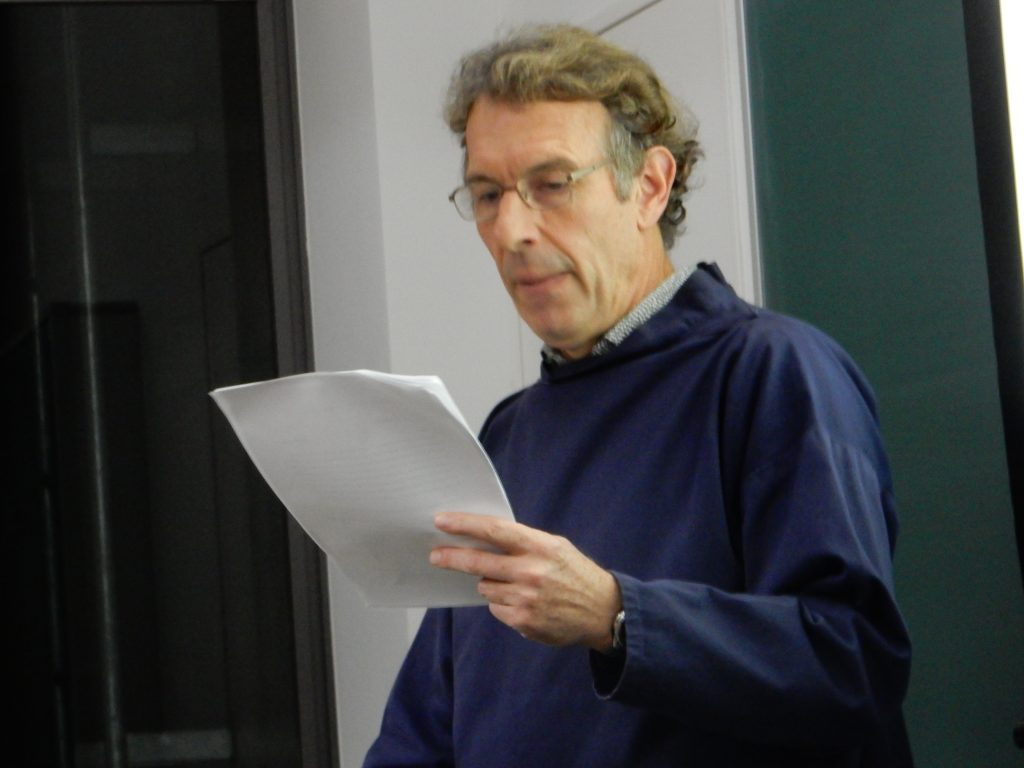
The first presenter was Stephen Gill, who leads the Hailstone Haiku Circle, addressing the matter of ‘Basho: Self-Portrait’. He made the point that Basho saw himself very much as part of the tradition of literary travel, following in the footsteps of Saigyo and Sogi. In his travel sketches he painted himself as a dot on the landscape, immersed in nature, and he represented himself symbolically in the form of his travel accoutrements – rainhat and robe, staff and straw sandals. In a haiku he conjured up the image of ‘A wandering crow’ (tabigarasu). The talk was illustrated with some striking pictures and self-portraits of Basho, who was an artist as well as a poet. One ink painting had the poet represented solely by a banana tree (Basho was a pseudonym taken from the tree planted next to his hut in Edo). Already by 45 Basho thought of himself as an old man, wandering the country on his own – ‘Our life in this world –/ little more than taking shelter / along with Sogi’. The talk strongly suggested that Basho had consciously fashioned a self-image of a traveller through life, drawing inspiration from nature and from Japan’s literary tradition. The journey included hardships as well as joys, and fittingly it was on a journey that Basho died on his way to Osaka. Even on his deathbed, his dreams went wandering over withered fields….
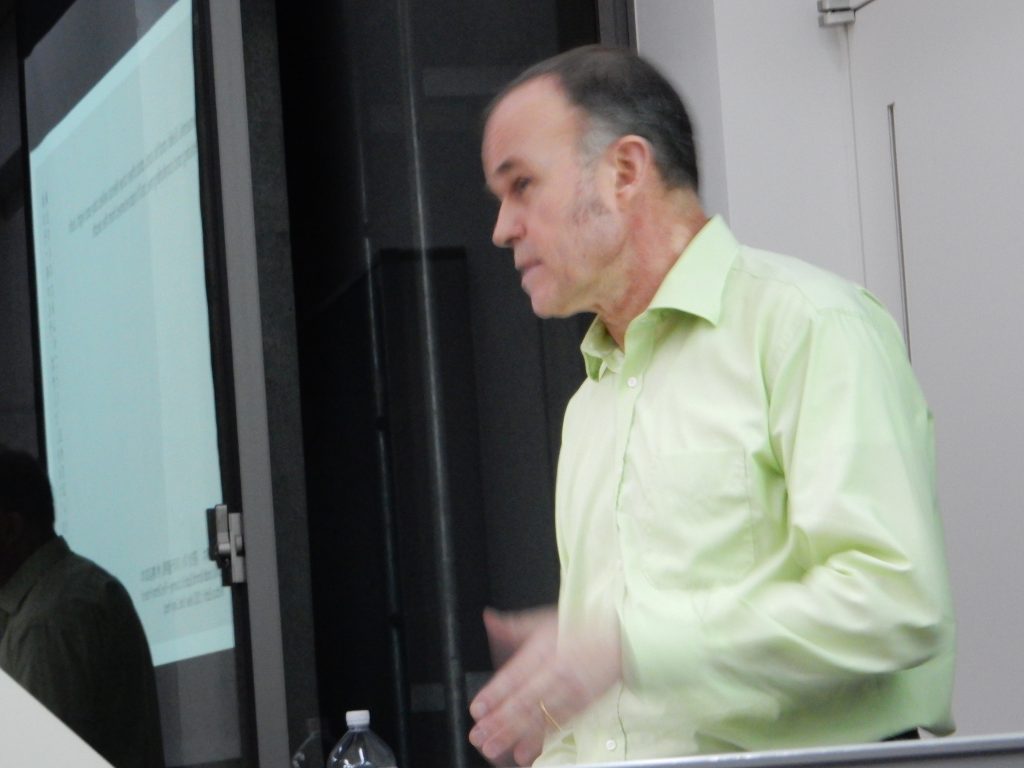
The talk was followed up by a presentation by Robert Wittkamp, which argued that rather than an account of an actual journey, as is usually assumed, Oku no Hosomichi (Journey to the Far North) was a consciously constructed piece of fiction. Robert works in the Department of Humanities at Kansai University and is the author of several books on Japanese literature, including on Basho. He is well-versed in the intellectual frameworks behind such terms as ‘fictionality’, and while he referred to such theories, his talk was grounded in practical examples. His talk on ‘The failed institutionalization of fictionality’ was thus absorbing in systematically revealing that space and time were far from identical in the actual journey and the literary journey (a mere 12-14 pages of A4 in length). In fact, the haibun (poetic essay) is more like a journey into a dream world than into a real world. According to Robert, it is evident that Basho himself created it as a literary piece rather than a travel account by various ‘signposts’ which he carefully detailed, covering such features as the title, the format, the use of medieval expressions, the existence of a ‘narrator’ who is never identified, use of ‘as if’ to suggest unreality, the priority given to textual rhythm rather than facts, and the unreliable narration (Basho at one point describes the narrator as lonely when in fact there was a companion, who is only mentioned later in passing). So, Robert wondered, if the book is so obviously fictional, why is it always regarded as factual, with people retracing the steps and trying to match the content to the actual journey? The answer, he suggested, would seem to lie in a reluctance to question Basho’s sincerity and self-image.
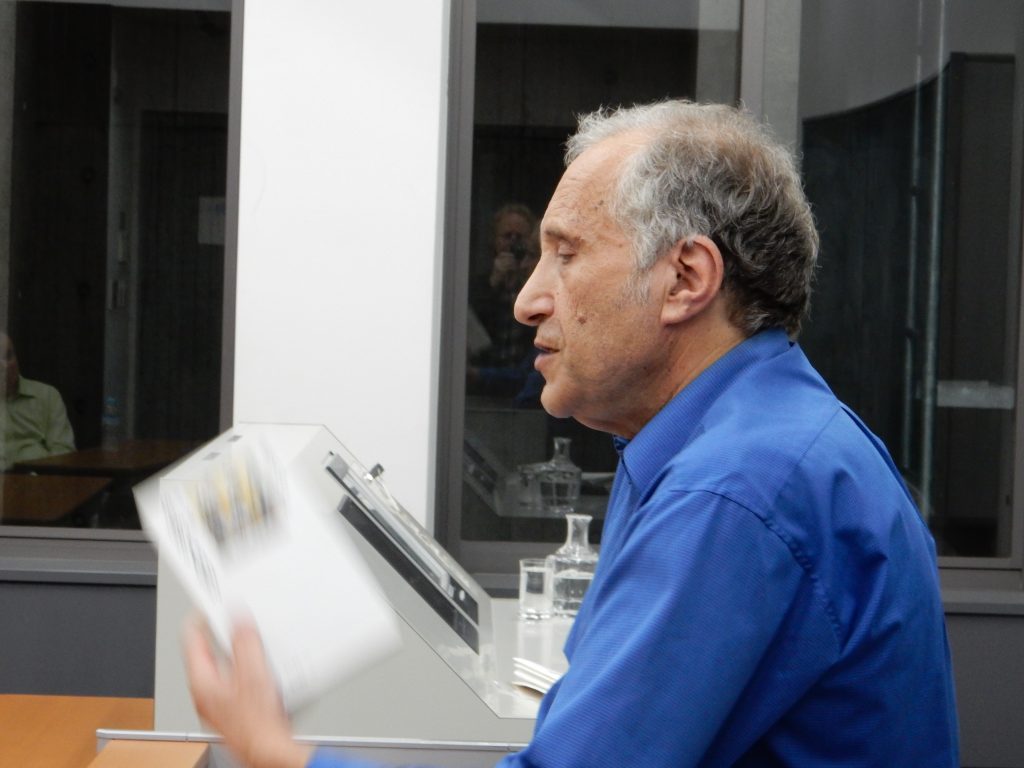
The final presentation (‘History in Basho: Bonding the Generations’) took a very different form from the previous talk. WiK member Jeff Robbins, author of Basho4Now, has been concerned to bring to light Basho’s non-haiku writings, namely the verses he wrote in renga (linked verse) as well as his personal letters, tanka (short poems) and spoken words left in the account of others. Jeff’s contention was that these show Basho’s compassion and humanity in much clearer terms than the detached observer in the haiku. The statistics were striking: Basho had contributed one in six of the officially collected renku, making some 1700 verses in all, as well as 229 letters and 118 haibun. Yet little of this has ever been translated. Even more telling was a quotation by Basho: ‘in linked verse lies the bone-marrow of this old man’. From Jeff’s research, it seems that the linked verse, even in Japanese, has been studied mostly in terms of rules and linkage, whereas the content has been ignored. However Jeff wanted to insist on the warm compassion and humour that the verse showed, indicating what a remarkably sympathetic person Basho actually was. The 55 stanzas Jeff had uncovered about love, for example, were surprisingly romantic and sensual. And those about women were unfailingly warm and sympathetic. In short, the presenter found in these non-haiku expressions ‘profound resources for human self-understanding’, and he ended his presentation with an impassioned plea for collaboration on his ongoing project of translating and interpreting the material, which he wishes to have deposited in a library for others to work on and complete.
Presenters and audience moved afterwards to a nearby pub for fish and chips, drinks and further discussion. Basho’s self-image as a wandering crow; the fictionality of Oku no Hosomichi; and Basho’s humanity as expressed in linked verse and letters. Three most stimulating presentations, and Writers in Kyoto is most grateful to the presenters for such a wonderful and warm-hearted evening. Bringing such divergent writers together is very much what we are about. (Article by John Dougill)
